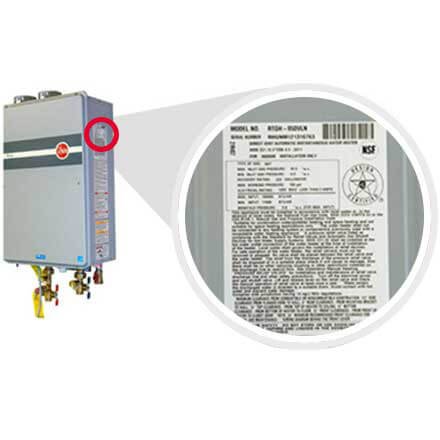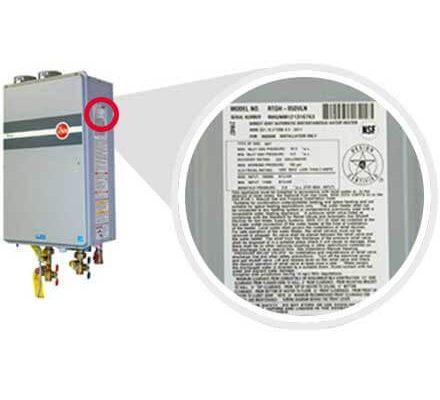
Picture finally installing that shiny Rheem unit, feeling pretty accomplished, and deciding to “quickly” register it online before dinner. Then, a year later, your hot showers start running cold—and you realize your warranty was never activated because of a tiny mistake during registration. Unfortunately, this kind of scenario isn’t rare. Honestly, most issues people have with Rheem water heater warranties start with simple, avoidable slip-ups at registration.
Let’s break down what gets in the way and how to sidestep those pitfalls—so you can spend less time troubleshooting insurance paperwork and more time enjoying hot water (and maybe a little peace of mind).
Not Registering Within the Required Time Frame
Here’s the thing: many folks assume there’s no hurry to register their Rheem water heater for warranty coverage. Maybe you toss the warranty card in a drawer with the batteries, leftover screws, and old remotes, telling yourself you’ll get to it “eventually.” But Rheem, like most brands, sets a strict window for warranty registration—usually 30 to 90 days after installation.
If you miss this window, your water heater may revert to a much shorter or more limited warranty. Sometimes, you could lose out on extra protection entirely. This time limit isn’t just a suggestion; it’s more like a reset button on your warranty eligibility. It doesn’t matter if the unit is brand new or has never been used—a late registration often means losing valuable coverage.
To avoid this, set a reminder on your phone or jot the registration deadline on your calendar right when the installation’s done. Think of it as syncing your warranty coverage code: if you input it late, you might not get the full upgrade.
Entering Incorrect Model or Serial Numbers
Let me explain why model and serial numbers are more than boring strings of letters and numbers—they’re the core “code” that Rheem uses to sync your registration with the specific water heater you own. One of the most common mistakes is copying these numbers incorrectly. Maybe a “5” looks like an “S,” or you swap two digits. It’s way easier than you’d expect.
If the serial number doesn’t pair with a Rheem system, your warranty activation can fail silently. Sometimes, you get an error message, but often you won’t hear anything until you need service. By then, the hassle of troubleshooting your registration problem can be a real headache.
To get it right, read the numbers directly from your water heater’s label—never guess from user manuals or receipts, since manufacturers sometimes change codes between units. It’s a tiny step that saves big headaches down the road.
Using the Wrong Installation Date
You might be tempted to use the purchase date for your warranty registration, but with Rheem, the installation date is what really matters. Why? Because warranties often start ticking from when the water heater is installed, not just when it leaves the store.
If you use the wrong date, it could shorten your coverage or create confusion later if you ever need to reset or troubleshoot your warranty. Plus, Rheem may ask for proof of installation if there’s ever a claim—like an invoice or installer’s receipt. Forgetting to pair the right date with your registration can cause delays or even denial of your warranty service.
A best practice? Snap a picture of your invoice or have your installer jot down the install date, then upload or keep it handy when registering online. It’s a simple battery backup for your documentation—helpful when memories fade or paperwork gets lost.
Failing to Provide Complete or Accurate Owner Information
You might be surprised how often people forget to enter their full address, leave out a phone number, or mistype an email when registering their Rheem water heater. Maybe you’re in a hurry, or perhaps you don’t want to share too much personal info. But here’s the thing: incomplete or incorrect owner details can derail your warranty, making it hard for Rheem to verify, sync, or reset your registration if issues pop up.
Not having accurate information can also slow down troubleshooting if you ever call Rheem’s support, because they’ll need to match your account details. It’s a bit like calling tech support with the wrong model remote—they can’t help if nothing lines up.
So, double-check your contact info before hitting submit. Make sure everything matches your installation paperwork. If you move, update your records with Rheem so your warranty doesn’t disappear into the ether.
Selecting the Wrong Product or Model on the Registration Form
You might be wondering, “What’s the harm if I pick the closest-sounding model number?” Sometimes, the product options in Rheem’s online form can be confusing. There are tankless, gas, electric, and hybrid models—each with several sub-models that look nearly identical at first glance.
Selecting the wrong product can “desync” your warranty from the actual water heater installed in your home. Down the line, this can complicate troubleshooting, void your warranty, or make it impossible to pair replacement parts when needed. Rheem’s support team relies on that model number to match the warranty to your unit, code updates, or even pair universal remotes for smart water heaters.
Always double-check your unit’s label. If you’re unsure, snap a photo and compare it to options on the website. When in doubt, don’t guess—reach out to your installer or Rheem’s customer service for help choosing the accurate model in the system.
Neglecting to Register Add-On Components or Extended Warranties
Here’s a detail that trips up more homeowners than you’d expect: with some Rheem water heaters, extended warranties or add-on kits like recirculation pumps or smart remotes require their own registration. It’s not always obvious, but failing to register these components means they might not be covered—even if your main water heater is.
If you’ve purchased an upgraded battery backup, WiFi remote, or extended warranty code, make sure you enter those codes into the appropriate sections of the registration form. Sometimes, this involves a second step or a separate form altogether.
Check your receipts and the product packaging for instructions. If you see a unique registration website, code, or QR code, take a minute to sync that item with your main Rheem warranty. It’s like pairing additional remotes to your TV—you want everything talking to each other for smooth coverage.
Assuming the Installer Registered For You
Honestly, it’s tempting to assume the installer is handling the warranty registration. Sometimes they do—but often, it’s on you as the homeowner to complete the process. Just because your plumber hands you a stack of paperwork or says “all set” doesn’t mean your Rheem water heater is actually registered with the manufacturer.
This misunderstanding can leave you high and dry if something fails and you find out there’s no active warranty. Always double-check, directly with Rheem if possible. You’ll usually get a confirmation email or a registration document (sometimes both). Save this like you would your remote’s instruction manual or your water heater’s sync code.
If you’re unsure, call Rheem’s warranty department and ask them to verify. It might feel a little obsessive, but it’s much easier than troubleshooting a missing warranty when you need it most.
Submitting Incomplete or Incorrect Proof of Purchase
Finally, don’t overlook the need for proper documentation. For many Rheem warranties, you’ll have to upload or provide your proof of purchase—usually an invoice or receipt. It needs to clearly show the purchase date, the model number, and sometimes even the serial code.
If the image is blurry, cut off, or missing any critical details, your warranty registration could get stuck “pending.” Imagine trying to pair a universal remote with dead batteries—you’ll never get a full connection. Double-check that your documents are clean and complete before submitting.
Keep digital copies in a folder labeled “Rheem Warranty” for easy retrieval. If you need to reset your registration, file a claim, or sync with customer support in the future, you’ll be glad you did.
Bottom line: Registering your Rheem water heater for warranty isn’t rocket science, but it does require a little attention to detail. By sidestepping these common mistakes—missing the deadline, mixing up codes, or forgetting to include key info—you’ll avoid the most common registration pain points. Think of it as programming your hot water “remote”—get the codes right now, and you’ll save hours of troubleshooting and stress if anything ever goes wrong down the line.
